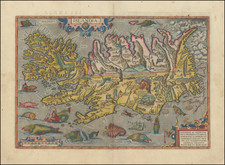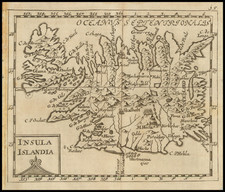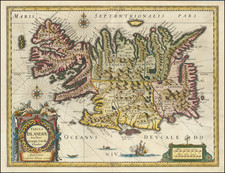Detailed map of the southwestern part of Iceland by Sir G.S. MacKenzie.
The map was prepared during MacKenzie's travels.
G.S. MacKenzie
Sir George MacKenzize was the only son of Major General Sir Alexander Mackenzie of Coul (d.1796), a General in the Bengal Army, by his wife Katharine Ramsay (d.1806), daughter of Robert Ramsay of Camno, he was born on 22 June 1780. He was tutored privately then spent one year at Edinburgh's High School (1795/6). He then studied sciences at the University of Edinburgh.
In 1796 he succeeded to the baronetcy at aged 16, on the death of his father. He first claim became known to the scientific world in 1800, when he claimed a proof of the identity of diamond with carbon by a series of experiments on the formation of steel by the combination of diamonds with iron; in these experiments he is said to have made free use of his mother's jewels In 1799 he was elected a Fellow of the Royal Society of Edinburgh.
Pupil and friend of Robert Jameson, Mackenzie devoted much time to the study of mineralogy and geology. His interest in those subjects led him in 1810 to undertake a journey to Iceland, when he was accompanied by Henry Holland and Dr. Richard Bright. To illustrate the conclusions he had formed with regard to the geology of Iceland, Mackenzie visited the Faroe Islands in 1812, and on his return read an account of his observations before the Edinburgh Royal Society.
In 1811, Bright, Holland and Mackenzie published Travels in Iceland; Mackenzie contributed the narrative of the voyage and the travels, and the chapters on the mineralogy, rural economy, and commerce of the island. It was favorably reviewed by Robert Southey (Quarterly Review, vii. 48–92). In this book Mackenzie first proposed explanation of periodic eruptions of geyser; he envisaged a geyser plumbing system that includes a large subterranean cavity connected to the ground surface by a highly contorted conduit.










![[ Iceland ] Isola d'Islanda](https://storage.googleapis.com/raremaps/img/small/98962.jpg)



![Denmark [inset of Iceland]](https://storage.googleapis.com/raremaps/img/small/72587.jpg)